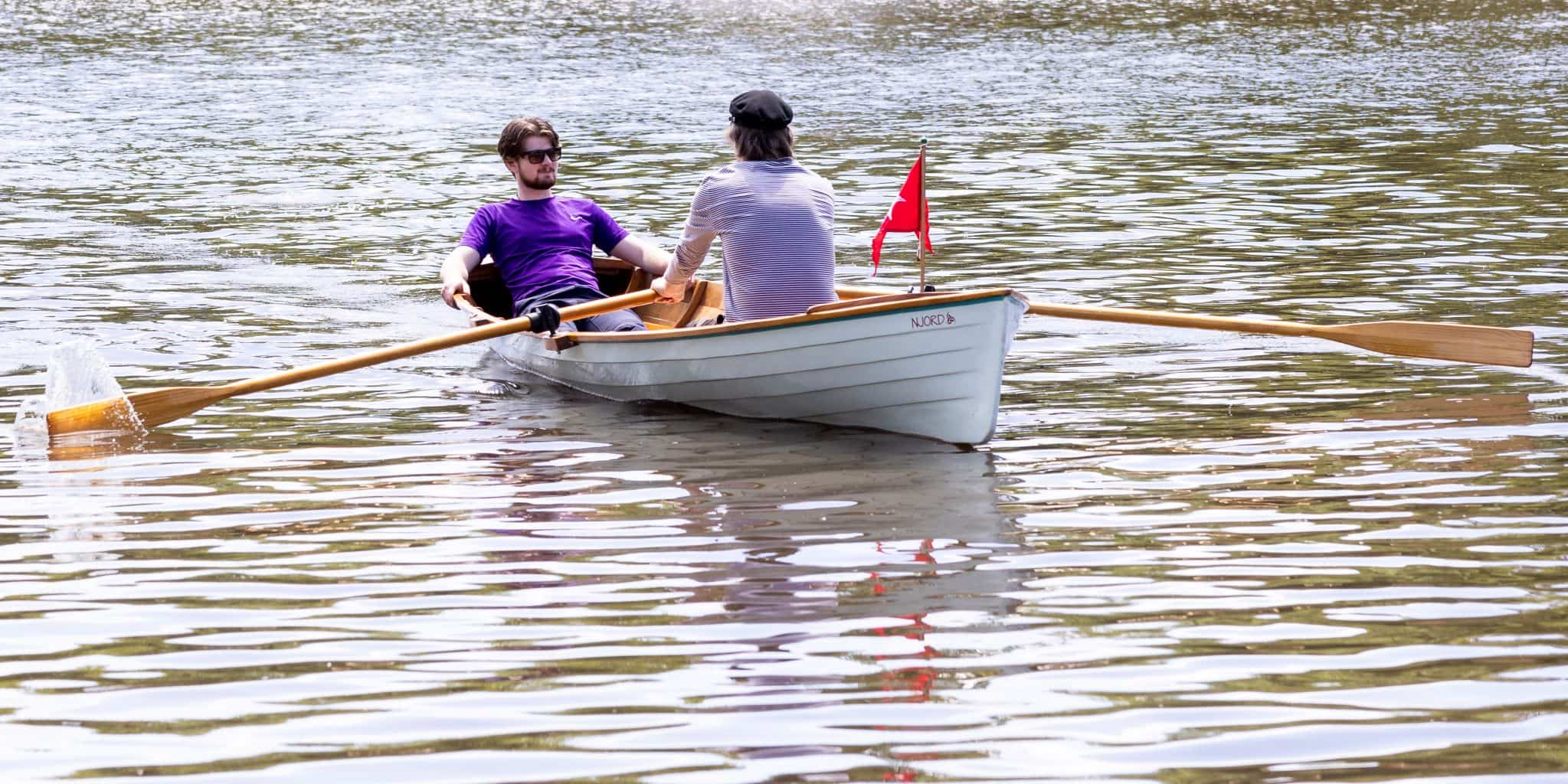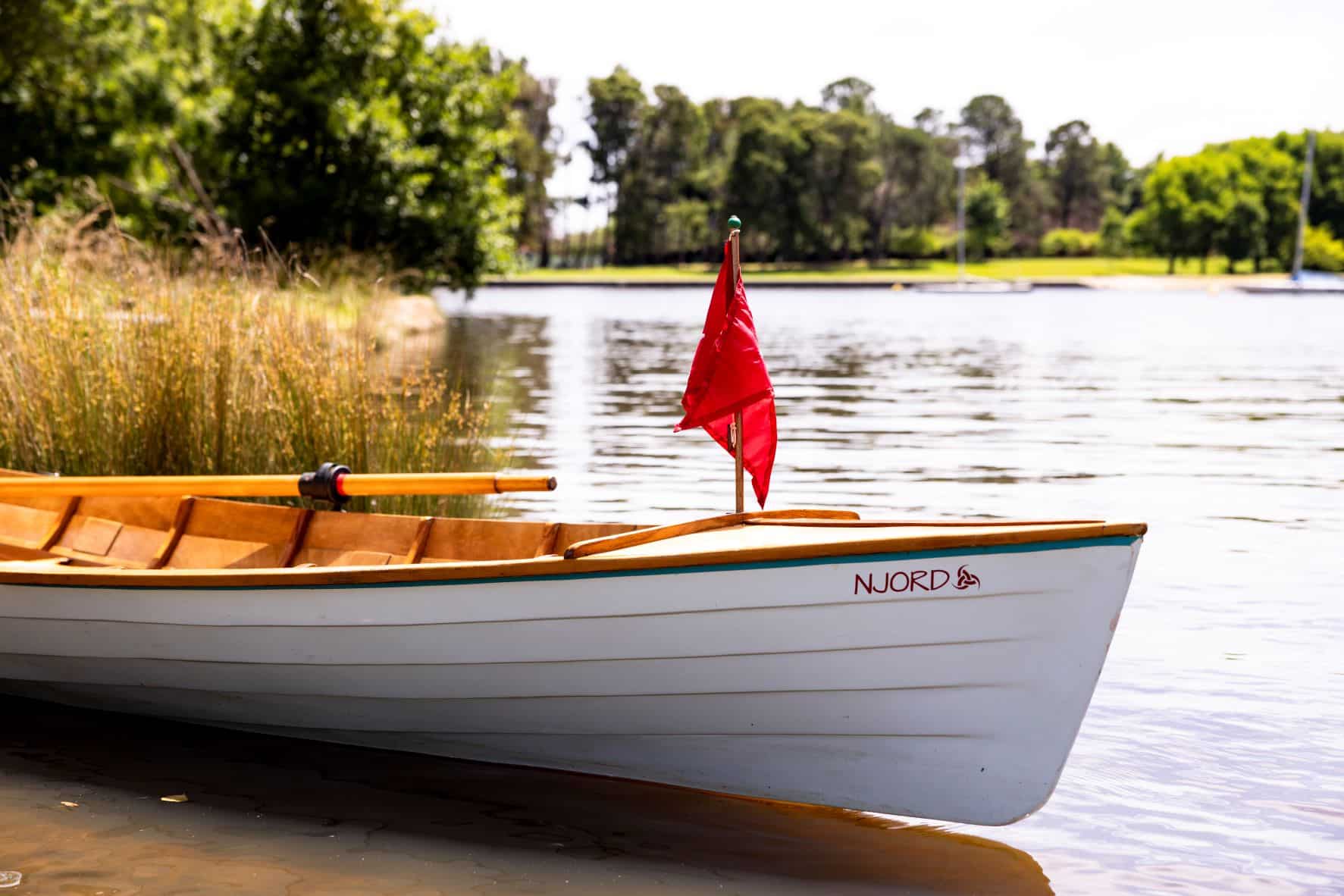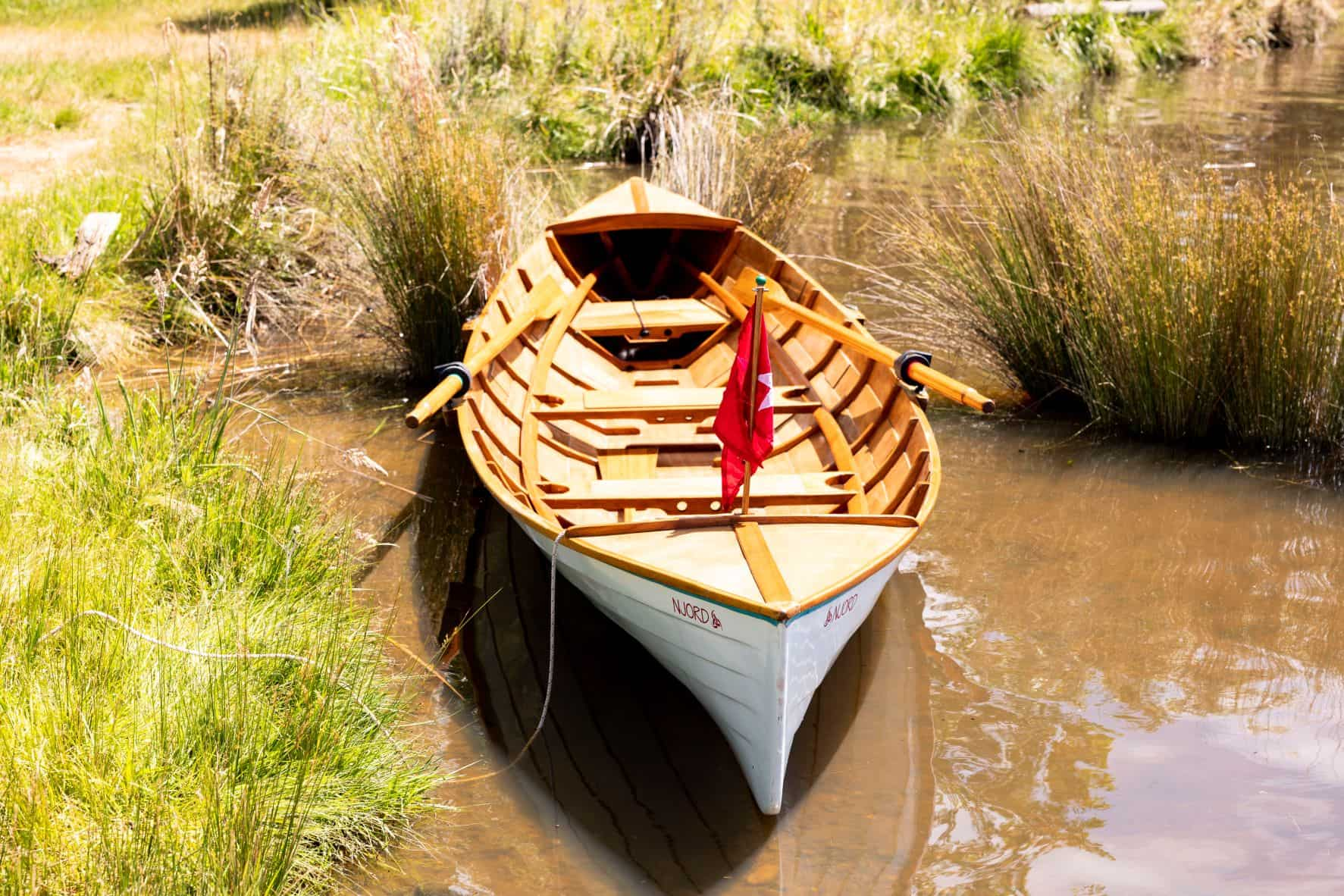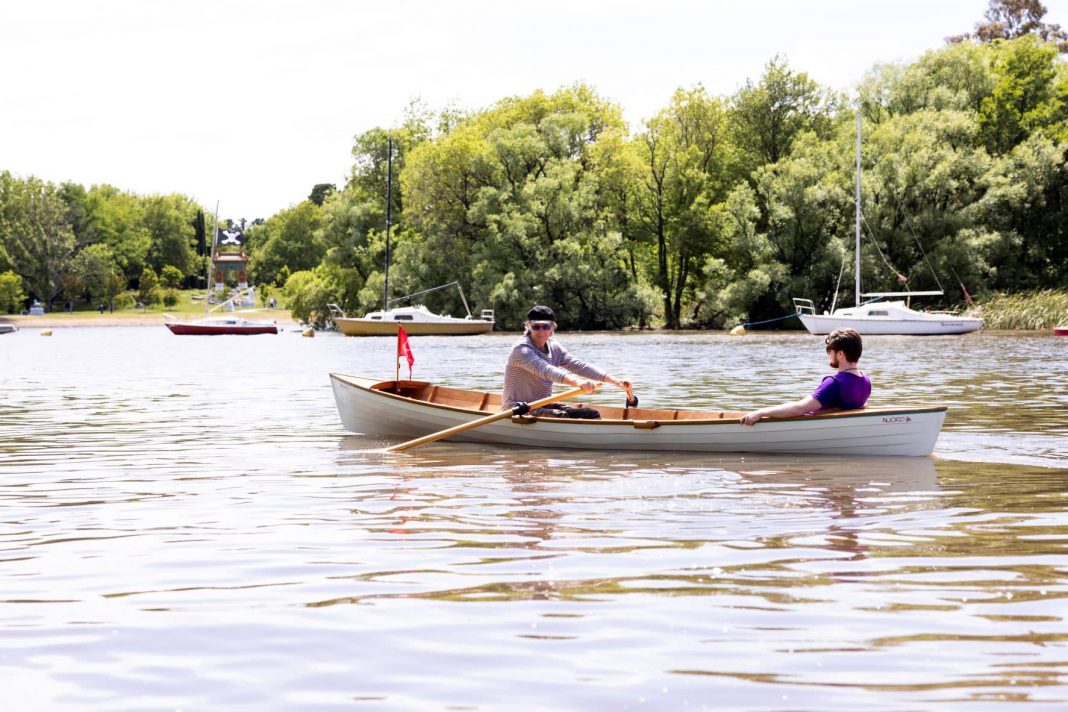Many eye-catching vessels and items can be seen floating atop Canberra’s waterways. One that never fails to draw attention from the crowd is the beautiful older-style boats of the Traditional Boat Squadron of Australia. The only club of its kind in the country, the squadron has brightened our lakes with their boats for the past 40 years.
“Every boat has a unique story which is not the same for a standard boat you buy from a factory. A traditional boat has a story about the builder and the material they used and where it operated in its previous life,” says Peter Ottesen, Commodore of the Traditional Boat Squadron of Australia.
Mr Ottesen, who has been a member of the Squadron for the last few years, is a true man of the sea and comes from a long line of Norwegian sailors and fishermen. Serving in the Royal Norwegian Navy during WWII, his father later worked in the Australian shipping industry as a ship chandler and providore, a vital part of a merchant ship’s operation.
“When ships come ashore, they need food, spare parts, need things fixed, they need clothes, navigation equipment. All the sort of stuff that keeps a ship running, other than fuel and water, he was the man they would come to because he knew where to get it at the right price, and quickly.”
In his own career, Mr Ottesen carried on the oceanic interest, training as a marine biologist and working on marine issues from commercial fishing to research vessels. The Commodore has carried an interest in boats most of his life, from small boats to being a part owner of an ocean racing yacht, Namadgi.
“There’s something really special about old boats built to old designs, using either old or new materials but capturing the history, the stories, and the techniques encompassed in old boats,” he said.
While most kids his age were out playing cricket or football on the weekends, Mr Ottesen recalls being on the water sailing; the only downside being that boats were harder to store than a bat, ball, and boots. The boats also required upkeep; new coats of varnish that had to be kept out of wet or cold weather meant they often ended up indoors.
“The boats had to be really good, and I remember during the winter having the boat in the loungeroom because we needed a controlled environment to varnish it,” he smiled.
Learning to sail looked quite different when Mr Ottesen first took up the sport in the1960s. There were no programs with accredited teachers; he learned as part of a sailing club where children were put in the deep end in Chelsea, near Melbourne.
“We bought a boat, and I was stuck in the boat and pushed out. I followed those other kids around and some of the dads would go around in a motorboat and yell at you what to do. ‘Pull your sail in, put the centreboard down, sit there’,” he said.
Based in Canberra, the Squadron’s fleet includes truly old boats and others that are replicas of old designs. Mr Ottesen says both are just as special in their own ways, revealing stories about the history of who we are, and who we were.



“All countries, boat transport and marine transport was the most important way to move things around and move people because roads are very crowded and rough, so it was the sea that connected countries and communities,” he said.
It is the material and technique of the build that sets a traditional boat apart from a more modern design. They are made from specific types of wood and fastened and finished in particular ways; it even comes down to how they are maintained. For example, using plywood or glue could now be considered more modern.
“If you have an old boat, modern technology now is you seal the outside with an epoxy. You use modern techniques to take out an old problem,” he said.
“With an old boat, you have this sense of stewardship. It means you are basically looking after it on behalf of the current generation, but you are doing it to hand it over to the next generation to look after.”
With around 20 active members in the Squadron, Mr Ottesen says that like old cars, old boats tend to attract more men than women. The group membership is predominantly male with a few women and spouses joining. He smiles as he admits he is one of the younger members, but ages range from around 40s to 80s.
“I think people if they have a passion for a particular activity, they’ll do it in their teens really actively, and in their early 20s. They settle down, the kids come along and then they drop out till the kids sort of grow up to a certain age. Maybe they’ve gone to university, at that point, and then they go back into the sport.”
As members get older, Mr Ottesen says it becomes more difficult for them to participate in sail days and to maintain their vessels. They then have to make the important decision of who to sell their boat to.
Mr Ottesen owns a traditional style 17-foot rowboat; the bow and the stern are the same shape, which means the boat can be steered in either direction. Though he suspects his vessel isn’t very old, it has been built to an old design. Named Njord after the Norse God of wind and sea, like other traditional boats it has its own story.
Its design was influenced by the wherry, a boat that was used to carry cargo and passengers along the canals and rivers of England from the 1600s to 1800s. It was built by a NSW shipwright, who sold it to a friend of his. Mr Ottesen’s friend was looking to offload the boat as she no longer wanted to store it and was getting too old to use it.
“I didn’t even examine the boat. It was one of those things in a rotten old shed, out in the yard, a canvas tarp over it covered in dust and what have you, I just lifted the corner. There weren’t any lights; I could just see there was a boat there that looks really interesting. I just said tell me what you want for it, and I’ll buy it’.”
When pandemic restrictions hit in 2020, Mr Ottesen set to work restoring the boat, fixing some woodwork, undertaking a few modifications, resealing, and a complete revarnishing. He also designed and built a bespoke trolley so he would be able to launch the boat on his own.
“Not like one of our members whose boat, he found in a farmer’s paddock and the farmer said, ‘I’m about to burn it, it’s just fallen into such a bad state that it’s not worth anything’. John said ‘no, I can’t stand the idea of that’, so he took it and put it in his garage for 18 months and then completely restored it.”
Another member built a vintage speedboat from scratch, with timber, stainless steel, and leather seats, a true feat of craftsmanship. While it may not be the most cost-effective way to go about something, Mr Ottesen says you achieve something fantastic, and some may also turn a profit. A new member has recently docked at Kingston harbour with a beautiful, nearly 100-year-old boat that he plans to hire out for weddings.
The Squadron meets monthly to discuss business before holding a roundtable where everyone talks about what they have been doing over the past month. It is the best time to share anecdotes of their travels and ask for other members’ advice if they have a problem they need help with. The club also hosts a sailing day once a month.
“We usually start from Lotus Bay near the Canberra Yacht Club then we will go out for a morning or so and go out as a fleet and stop somewhere for morning tea or lunch,” he said.
If the weather is unfavourable for rowing, Mr Ottesen will get a lift with a motorboat, as many of the boats now have an electric motor. He said older motors can be temperamental and there’s nothing wrong with reflecting changing times by using an electric motor.
The Squadron believes the boats are an important part of the ambiance and recreation value of Lake Burley Griffin and have been in discussions with the National Capital Authority on how to make the Lake a better place for smaller boats.
Mr Ottesen said the NCA has been responsive, putting rubber fenders along Commonwealth Place and places to tie up, while the City Renewal Authority is also making plans for smaller boats in their Acton waterfront plan. The Squadron is trying to contact the ACT Government about suitable facilities at Kingston harbour, which is presently more suited to larger boats. However, he knows the boats would be a great addition to the foreshore as people always want to stop and hear their stories, while also spending time with his fellow Squadron members.
“I think a lot of things that we like to do, we like to share with others, which creates an opportunity to share experiences and create shared memories.”
To find out more about the Traditional Boat Squadron of Australia, visit canberraboating.com



